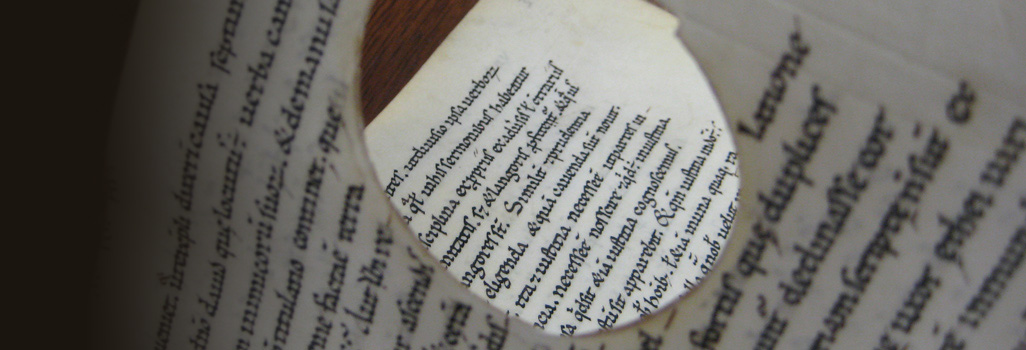
From Sithiu to Saint-Bertin: Hagiographic Exegesis and Collective Memory in the Early Medieval Cults of Omer and Bertin
Studies and Texts 219 • 2019 • xiv, 340 pp. • ISBN 978-0-88844-219-2 • Cloth • $95
Medieval historians who have explored the abbey of Sithiu (modern Saint-Omer) have often done so to explain the competition between the canons of Saint-Omer and the monks of Saint-Bertin, a rivalry deriving from their shared origins in the abbey of Sithiu. However, David Defries’s book centers on the cooperative relationship that developed between the saints Omer and Bertin in the monks’ collective memory. Throughout the early Middle Ages, the cults of the abbey’s two patron saints shaped the life of the community at Sithiu, and the first four centuries of its development reveal how a group of monks negotiated their place in the larger Christian West, adapting Columbanian and Benedictine identities to fit the relationship they discerned between Omer and Bertin.
The evolution of Sithiu’s collective memory demonstrates that the methods used in most studies of early medieval collective memory produce a distorted image of the partnership. Historians overwhelmingly assume that collective memory has a narrative structure and that the texts meant to shape its evolution are “historiographic” in form. In contrast, David Defries treats Sithiu’s historiography as a type of scriptural exegesis that emphasizes the allegorical levels, especially typology and tropology, of the Christian scriptural hermeneutic. Paradigm, not narration, structured early medieval Christian allegory and thus early medieval collective memory at the abbey.
This argument has broad implications for the study of early medieval collective memory. The intellectual culture of Sithiu was typical of the early medieval West, and all the texts considered date between c. 740 and c. 1148, situating them in a period when writers trained in monasteries like Sithiu produced the vast majority of western European literature. From Sithiu to Saint-Bertin may thus be seen as a preliminary case study for the value of paradigmatic approaches to early medieval memory.
Author
David Defries received his doctorate from The Ohio State University and a Licence in Mediaeval Studies from the Pontifical Institute of Mediaeval Studies, Toronto and taught at the University of Tennessee before joining the Department of History at Kansas State University, where he is currently Associate Professor. His essays have appeared in Early Medieval Europe, Hagiographica, History Compass, and Mediaeval Studies, among other journals, as well as in recent collections on textual transmission and on hagiography and the history of Latin Christendom. He is currently at work on a history of Flanders and the world of the North Atlantic, from 864 to 1127.
Endorsements
“This book is a comprehensive, in-depth study of the early history of the monastery of Saint-Bertin (c. 650–1000). David Defries analyses the narrative texts concerning the history of Saints Omer, Bertin, and Winnoc. He argues not only for new dates for several of the vitae, but also for hitherto unnoticed intertextual relationships between these texts and many others, such as the Regula Magistri, the Regula Benedicti, and Gregory’s Regula Pastoralis. Defries’s new interpretations of principal sources provide important new insights, especially into the background and the consequences of the reform undertaken by Abbot Fridegis in the 820s and the relationship between the canonical and the monastic communities at Saint-Bertin and Saint-Omer from that point onwards. Methodologically, the book is a remarkable plea to interpret early medieval narrative sources in a new way: Defries argues persuasively that in using hagiography and historiography as historical sources we must take early medieval hermeneutics and exegesis into account.” — Steffen Patzold, University of Tübingen
Ordering
Customers in North America please order through University of Toronto Press Distribution by phone (1-800-565-9523) or by email (utpbooks@utpress.utoronto.ca). If you would like to order through UTP Distribution using another method such as mail or fax, please click here for a full list of contact and ordering methods. PIMS books are also available on Amazon.ca (for Canadian customers) and Amazon.com (for customers in the U.S.).
Customers outside North America please order through Brepols Publishers. PIMS books are available through the Brepols online catalogue.


